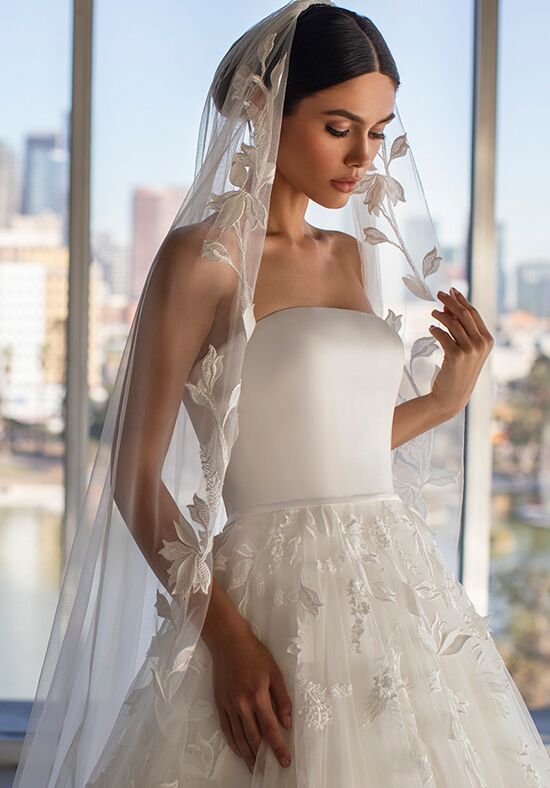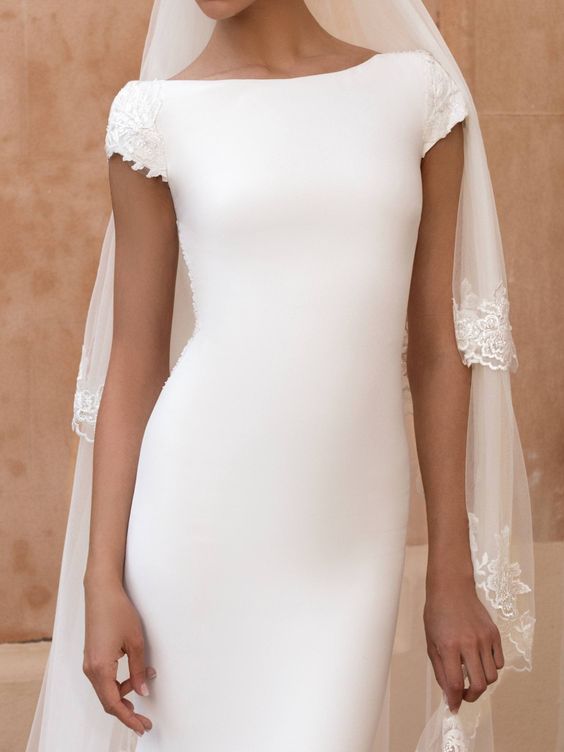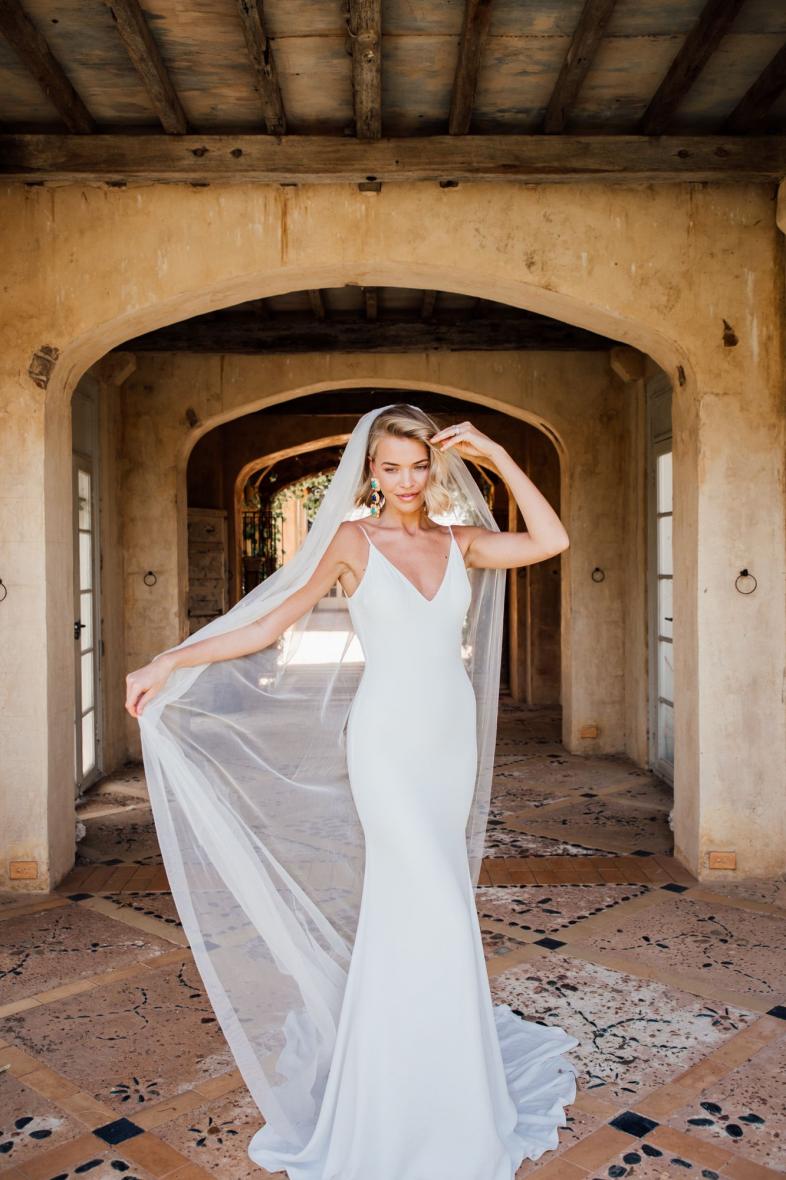A wedding veil is often the finishing touch to your overall look, your most important wedding accessory! There are so many different styles from which to choose that you may find yourself scratching your head. But, we have some good news! In the past, veils were chosen mainly for the formality and venue of the wedding. For example, a chapel length veil would be worn, well, in a chapel at a formal wedding–same goes for a cathedral veil. etc. Luckily, those rules are gone! It doesn’t matter if you are getting married at city hall, at the beach or in a barn, ANY veil you love is just fine!
Know Your Veils
While on your search, you are going to see lots of terms. Here is a quick rundown of what it all means.
- Elbow length: Ends right at your elbows. A good choice for the bride just trying to keep it simple.
- Fingertip length: This veil extends down to your fingertips when your arms are down.
- Chapel length: Extends 2.5 yards from the headpiece (or comb), falling down over the train of your dress. Want to add a little drama or whimsy? This could be for you, with or without lace or beading.
- Cathedral length: The cathedral veil is by far the most popular among brides today. It extends an impressive 3.5 yards from your headpiece, adding even more drama and WOW factor than the chapel train. Again, available with or without embellishments.
- Mantilla veil: This Spanish-inspired veil drapes over the head, and most of the time is made with lace. The length of the mantilla veil can vary. Unlike the other veils, it does not need a headpiece to keep it in place, although it can be secured with small pins.
- Birdcage: A birdcage veil, or cage veil, is a wedding veil style that is worn close to one’s face and doesn’t go past the chin. It is typically made of French netting or tulle. Perfect for the vintage or modern bride.
- Single-Tier: A single-tier veil is just what it sounds like. One piece of tulle or fabric, with or without bling or lace. Single tiers are the most popular by far.
- Double-Tier: The double-tier veil has two layers that extend to different lengths. This style can be used with any veil, including the blusher (see below). A double-tier veil usually has more volume than a single-tier veil, therefore, make sure it fits with your overall ensemble and does not distract from your wedding gown.
- Blusher: What is a blusher? A blusher is a single layer veil that is worn over the face during the ceremony, and is then pulled back over the head.


Tips to keep in mind
- When it comes to veil embellishments like beading or lace, always consider the detailing of your dress. The veil should accentuate and be proportional to the dress, not take away or compete from its details. A bridal consultant can help you choose the perfect balance!
- It is important to consider the placement of the veil on your head. Keep in mind that if you are wearing it toward the back of your head, the veil will be longer.
- If there is any color variation between the dress and your veil, you always want to choose a veil that is a shade lighter (versus a shade darker).
- Consider your hairstyle! A veil could look completely different depending on whether your hair is up or down.
- Try on different veil styles. You will know when you find the one that represents your look and your personal vibe.

